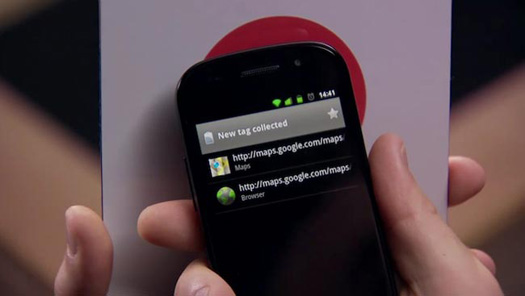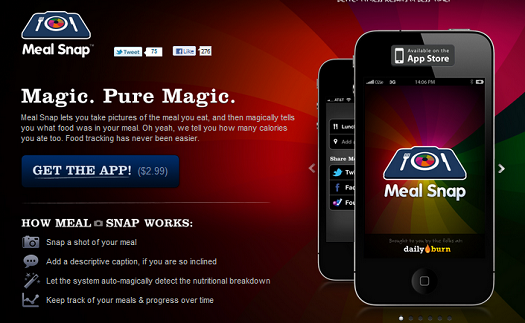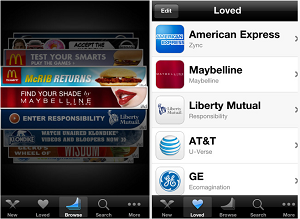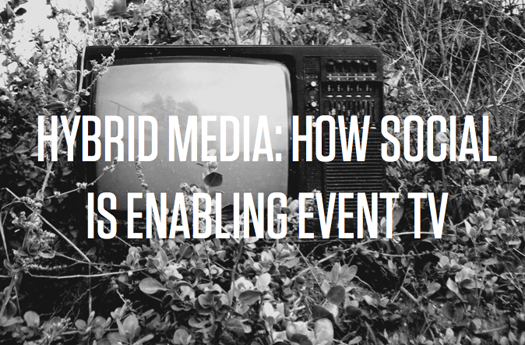
1. Google Ditches Barcodes for NFC
“Google is moving away from barcodes and towards NFC (near field communication) if a pair of stories about the search company are tied together. Yesterday, news broke out about Google’s decision to officially end support for the use of QR codes, the 2D barcodes readable by camera-equipped mobile phones, in its business listings service Google Places.”

2. Pets Win When You Check-In on Foursquare
“The marketing team for Granata dog food in Germany, has designed a unique collaboration with Foursquare that will make both owners and pets howl with delight. Every time you and your furry friend pass a bowl-equipped billboard for Granata food, you can check in on Foursquare and the billboard will dispense a free sample of the kibble into the attached dish.”

3. Street photography has undergone a revolution
“Since everyone with a cellphone tucked in pocket or purse today seems ready to start snapping away on its built-in digital camera, one might say we are all street photographers now. Even though issues of meaning and quality will always remain for individual images, that ubiquity means street photography as a distinctive formal genre is pretty much over.”

4. Augmented Reality App Could Save Librarians Hours
“Miami University’s Augmented Reality Research Group, led by Professor Bo Brinkman, has developed an Android app that could save librarians a lot of time and hassle. Using the Android’s camera, the app “reads” a bookshelf, and with an AR overlay, quickly flags those books that are misplaced. It will also point to the correct place on the bookshelf so the book can easily be re-shelved correctly.”

5. When Twittering Gets in the Way of Real Life
“Whether it’s a dad joining conference calls by cellphone during the family vacation, teenagers texting under the table or moms checking Facebook from the soccer sidelines, technology intrudes upon family life in most American homes. And it’s only going to get worse as technology becomes even more accessible.”

6. Hashtags on programmes – It’s the bat signal!
“The ‘hashtag bat signal’ and the programmes page are not the only way of introducing the idea of a hashtag for the programme (and there are some examples of specific calls to action in programmes which involve hashtags: #askRhod, #bbcFilm2010 etc) but it is an elegant one.”

7. The history and the future of the Windows Phone Metro design
“Metro isn’t a new style designed for the sake of being different. It’s a foundation to build on for a long time to come. It’s our starting point for what we believe is the next era of user interface design, one that is focused on content over metaphors, information over tools, and movement over static pages. It’s a language designed to clearly augment the information around you, by removing the clutter around it.”

8. Runkeeper and the Body API
“With the addition of FitBit and Zeo devices to the Runkeeper store, the company is signaling their longer term strategy to be the connecting tissue between personal sensors and the health and fitness data they’re collecting, All of the current devices in the store and all future devices will be integrated via the Runkeeper Body API.”

9. The first musical album that’s also a location aware iPhone app
“When the album is released this spring, users will be able to download the album over the Mall’s WiFi. The phone’s geolocation will sync up with an impressionistic map rendering created for the app. Hit play and as users create their own path through the Mall, they’re creating their own special listening experience.”

10. Real Racing 2 HD – 1080p Video Out Demo
“With full support for high-definition, 1080p output – a first for any iOS game – in the next major update, Real Racing 2 HD will be the perfect title to see the full potential of Apple’s latest hardware.”
Tweetworthy is a weekly roundup of the most shared tweets from @MobileBehavior. You can follow us on Twitter here.
]]>
































